May 4, 2021
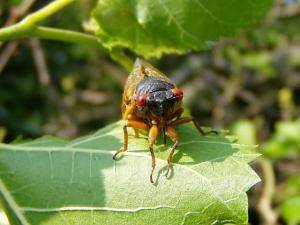
Are periodical cicadas a threat to field crops? The quick and dirty answer to this question is NO. Are they a thread to the health and welfare of anything? There is no quick and dirty answer to this question.
The best way to answer the second question is to start by looking at what the periodical cicada is, what it feeds on, where one would expect to find them, and its life cycle.
The periodical cicada or 17-year cicada is an insect with an extremely long life cycle that takes 17 years to get from the egg stage to the adult stage. Some people mistakenly refer to this insect as a locust. Unfortunately, locusts and cicadas are not one-in-the-same. Locusts are a type of grasshopper (Order Orthoptera). Cicadas (Order Hemiptera) are not grasshoppers. And the 2 look nothing like one another.
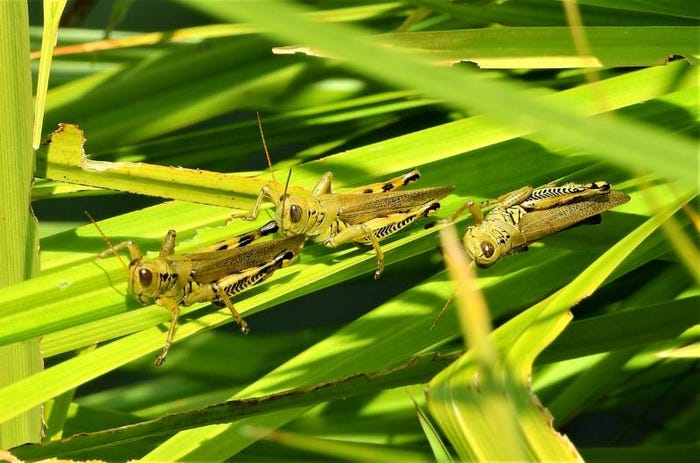
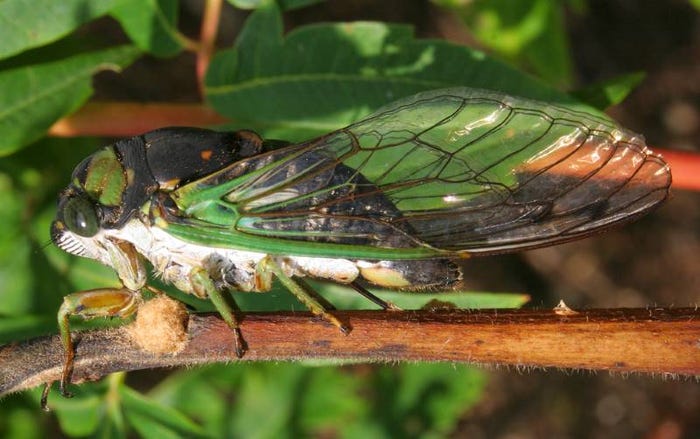
The periodical cicada feed mostly in their nymphal stages and are hosted by trees of many species. And since it takes 17 years of feeding by the nymphs, the trees have to be old and well established, minimally 20+ years old. Therefore, periodical cicadas are going to be found in and around long-standing woodlots, forests and landscapes (homes, parks, and cemeteries), especially those that have been established in or next to woodlots. What does this preclude? We will not find periodical cicadas in crop fields, pastures, landscapes recently established on field crop ground, housing developments where all of the ground was excavated, or basically anywhere where there isn’t long established trees. There are also northern limits to their natural range (e.g. they do not exist very far into the state of Michigan).
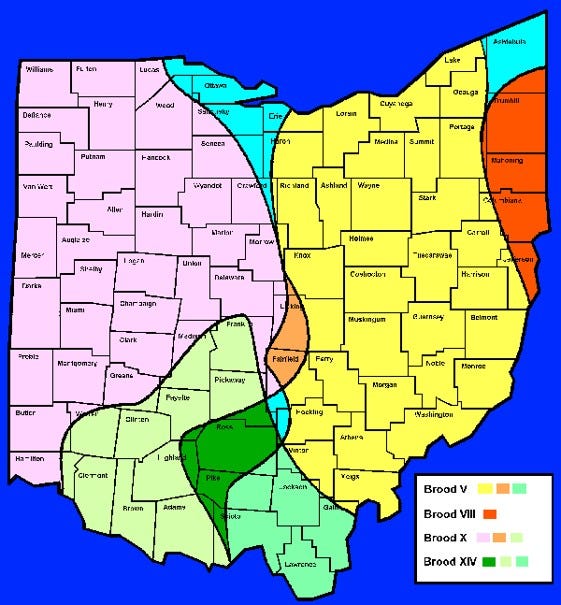
The periodical cicada has three stages in its life cycle, eggs, nymphs and adults. Adults present themselves once every 17 years for about 4 to 6 weeks. In Ohio, the time period could start in early May in southern Ohio and mid- to late May in northern Ohio. Not all parts of Ohio will experience periodical cicada. Besides being limited to places where older growth trees are established, there are different populations called Broods that emerge in different years. In Ohio this year, we are expecting Brood X periodical cicadas which are mainly distributed in mid- to western Ohio (see the map). There is currently a Citizen Science projected called Cicada Safari with a reporting application for people to report where they run into populations (https://cicadasafari.org/). This is a smart phone application for reporting to help the scientists verify the true distribution of this insect.
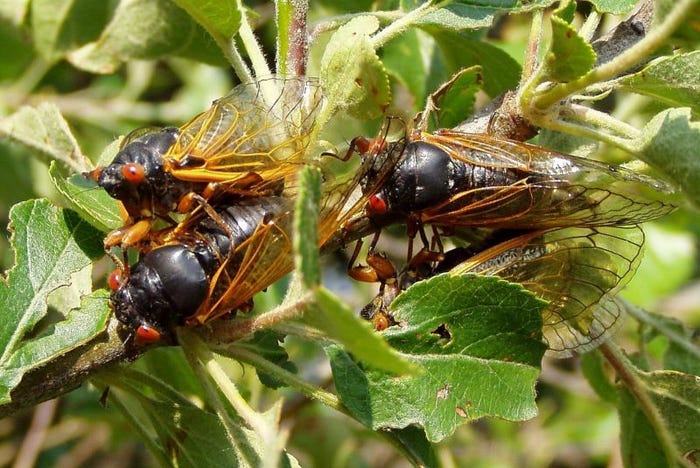
The main purpose of the adults is reproduction, find a mate, mate, and lay eggs for the next generation. This is when damage can occur to trees. Mated females jam their ovipositors (egg-laying structures) into small branches of trees. Multiple jabs can damage the stems to the point that they may die or at the very least be very easily broken called flagging. Mature, healthy trees will easily grow through this damage. Very young trees and newly planted trees may suffer from the damage. Because of the way that orchard trees are pruned and managed, this could cause serious damage and crop loss.
The eggs hatch a short time after they are laid. The newly hatched nymphs drop from the trees to the ground, dig in and find a tree root to attach to for feeding. No research has been done to determine if the nymphal feeding causes and problems for the trees. And that is where they stay for 17 years.
Are they a health concern for humans? No, they do not bite nor sting. Are they a threat to livestock or pets? They are not poisonous, however some dogs and cats stuff themselves with cicadas to the point that they vomit.
Source: Ohio State University, which is solely responsible for the information provided and is wholly owned by the source. Informa Business Media and all its subsidiaries are not responsible for any of the content contained in this information asset.
You May Also Like




